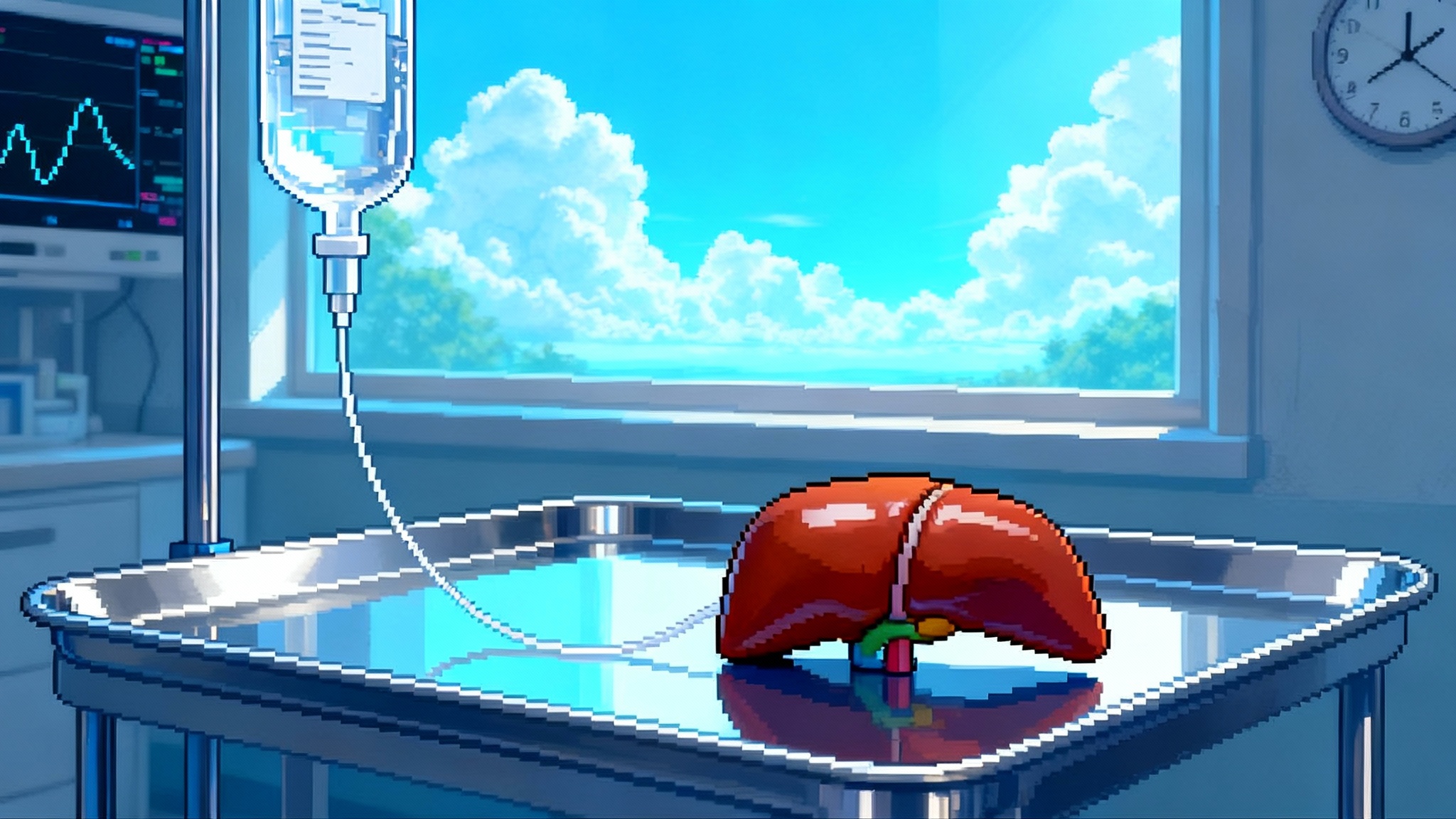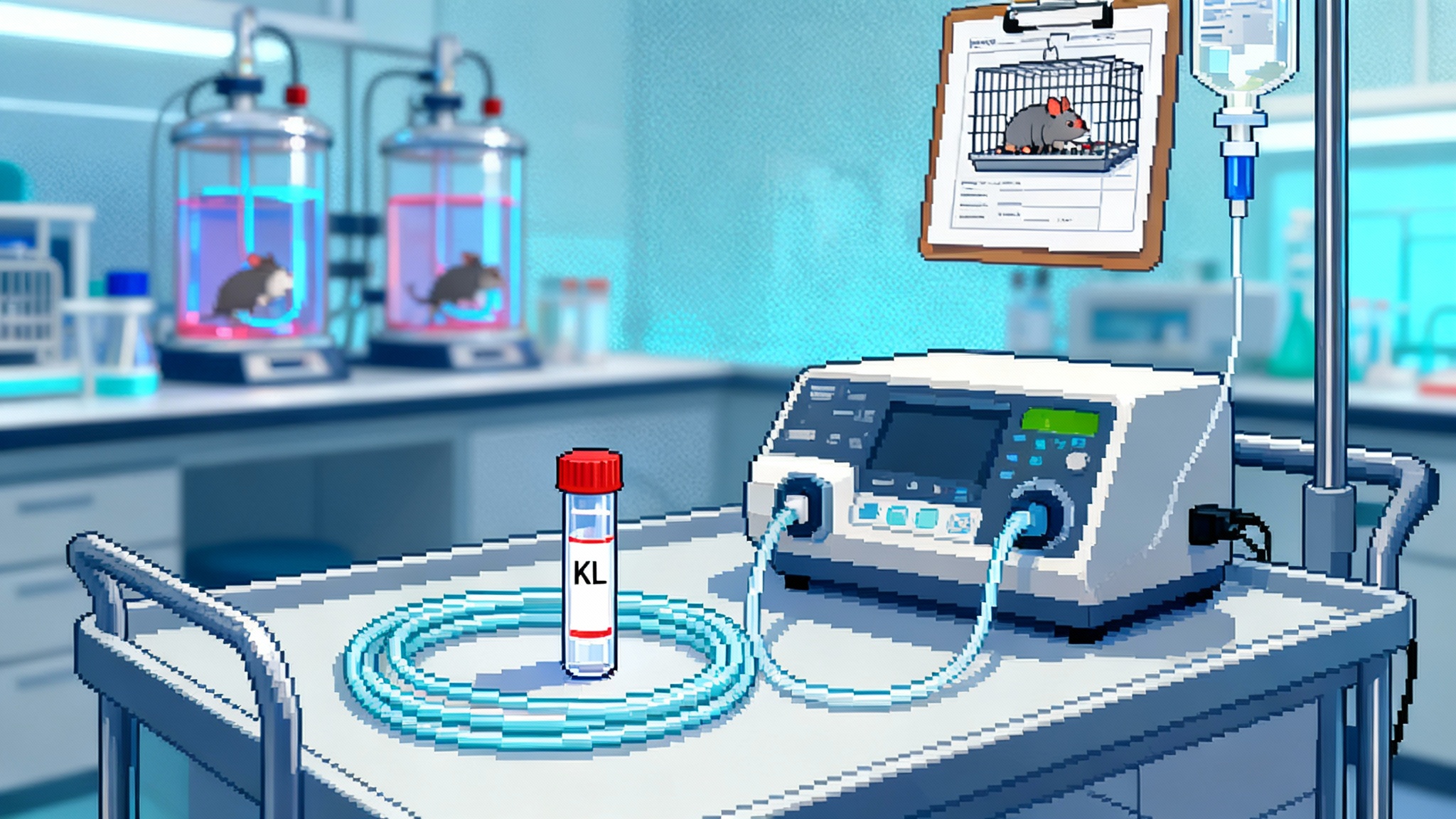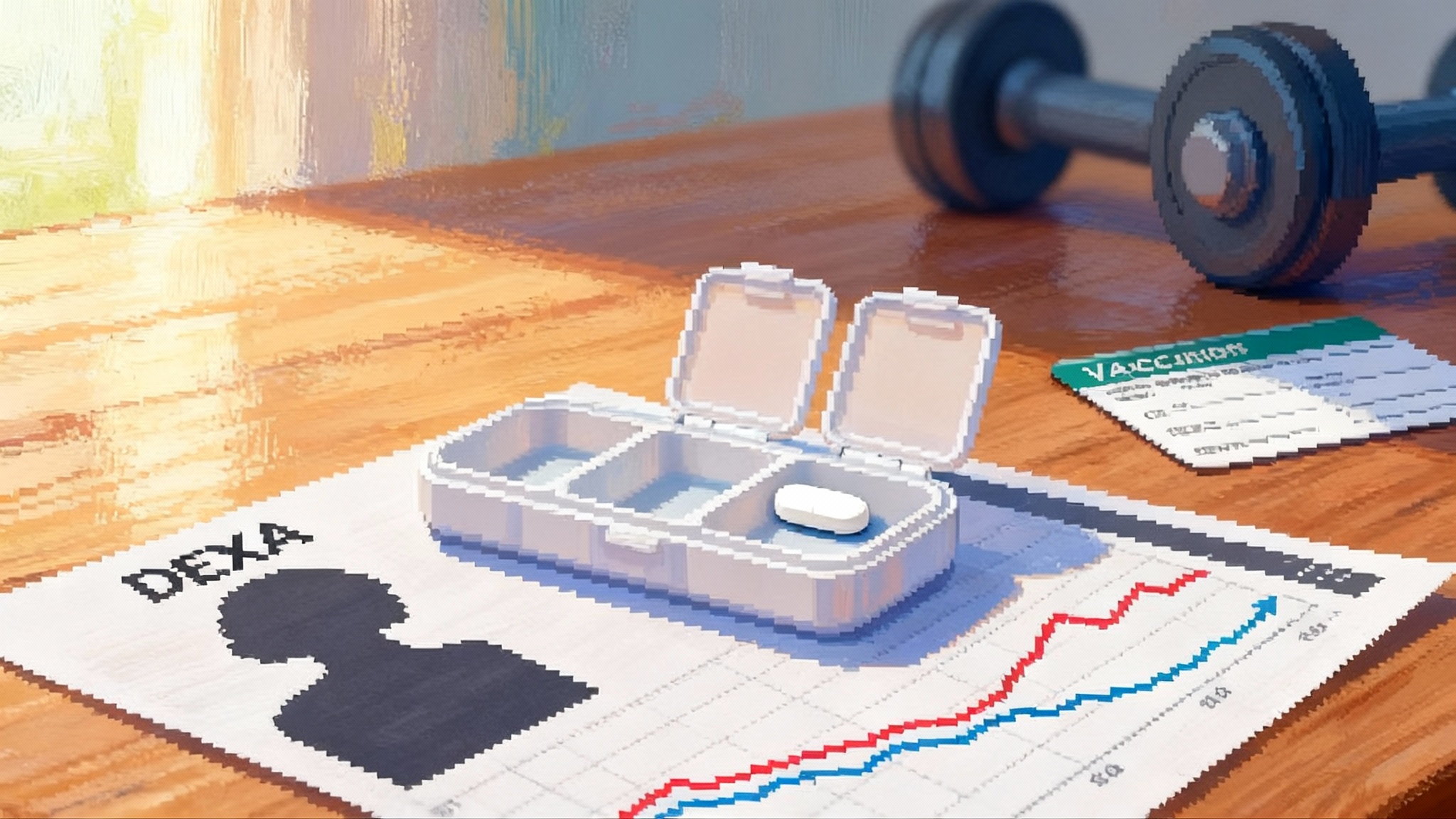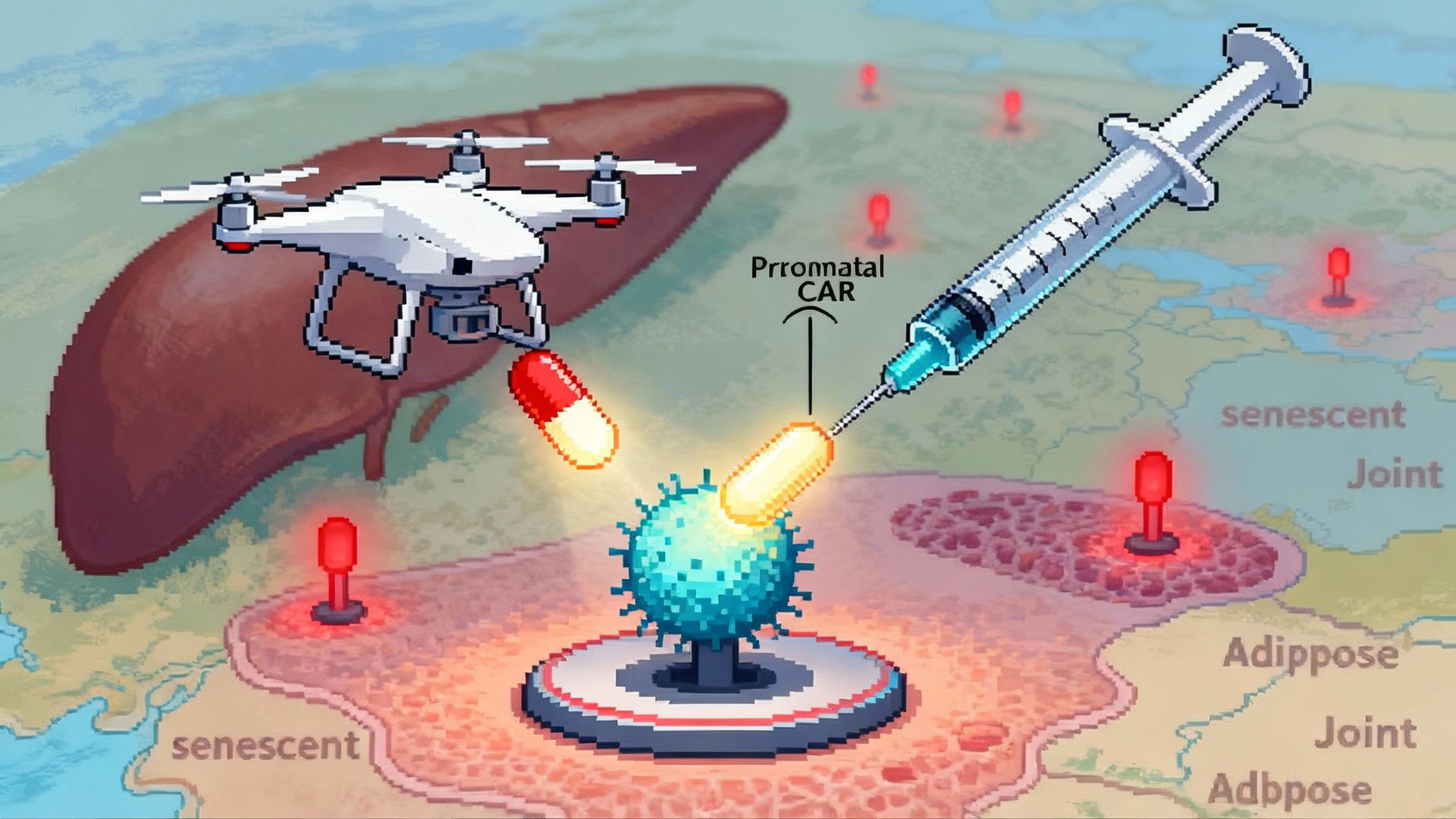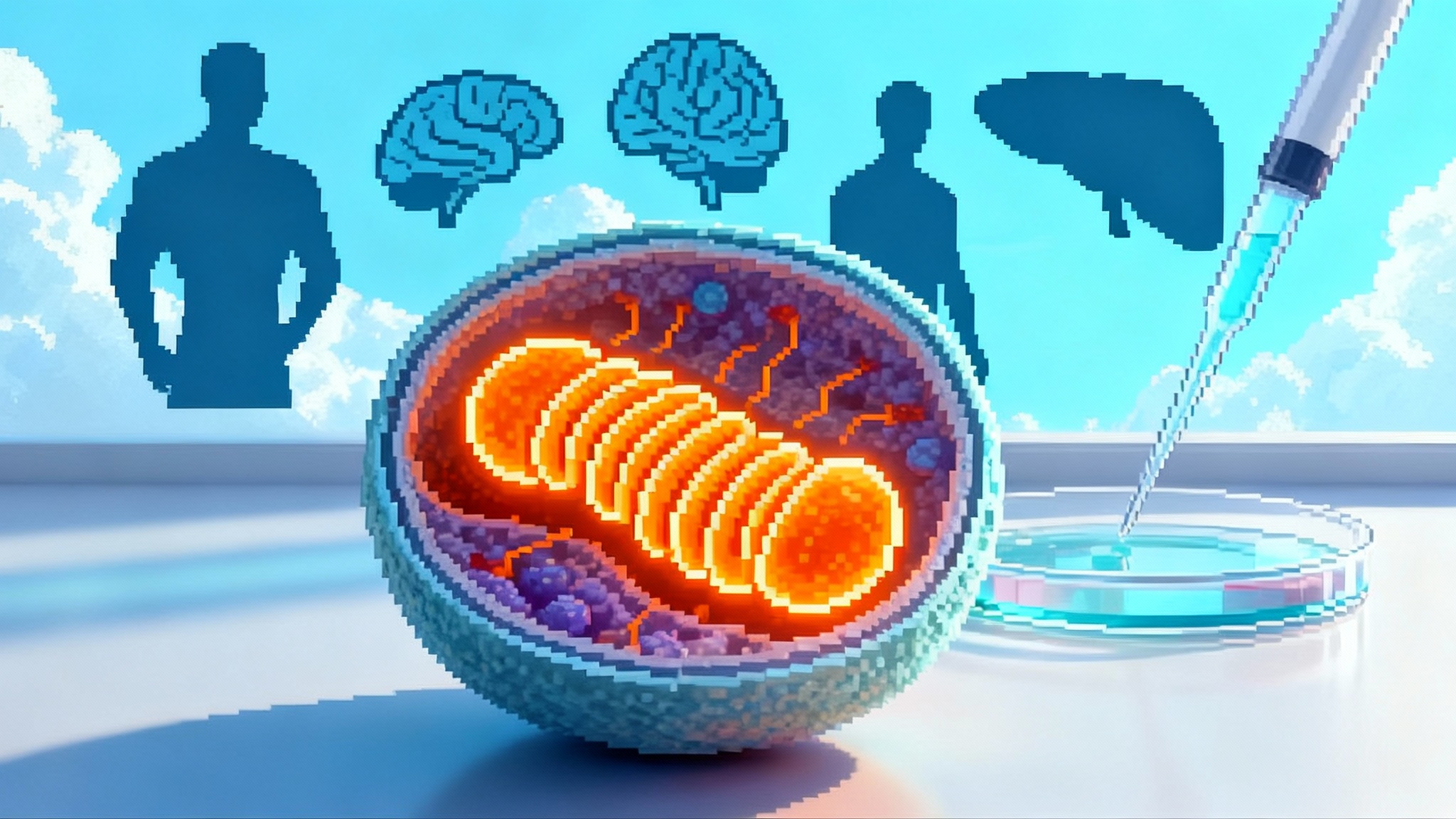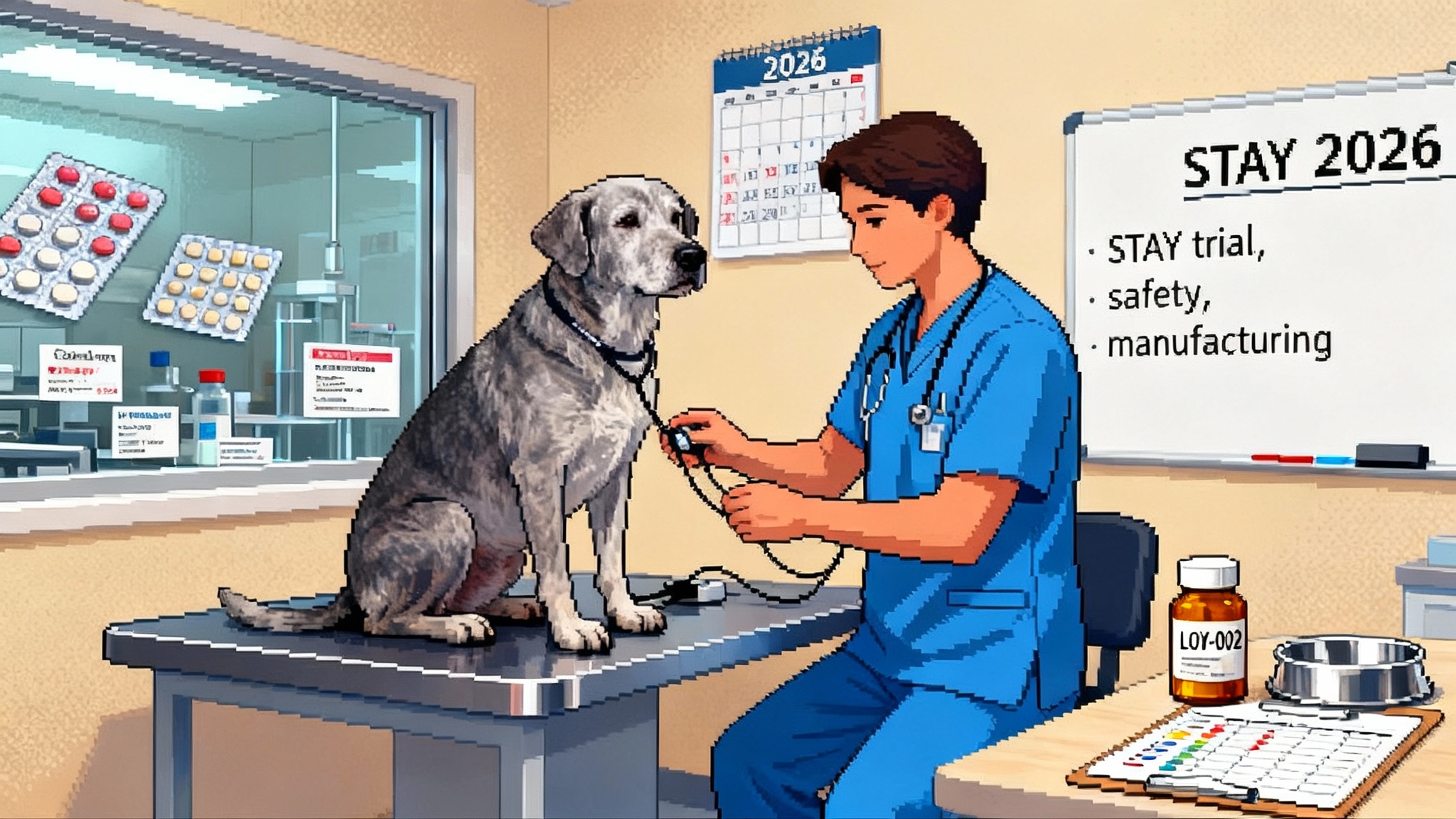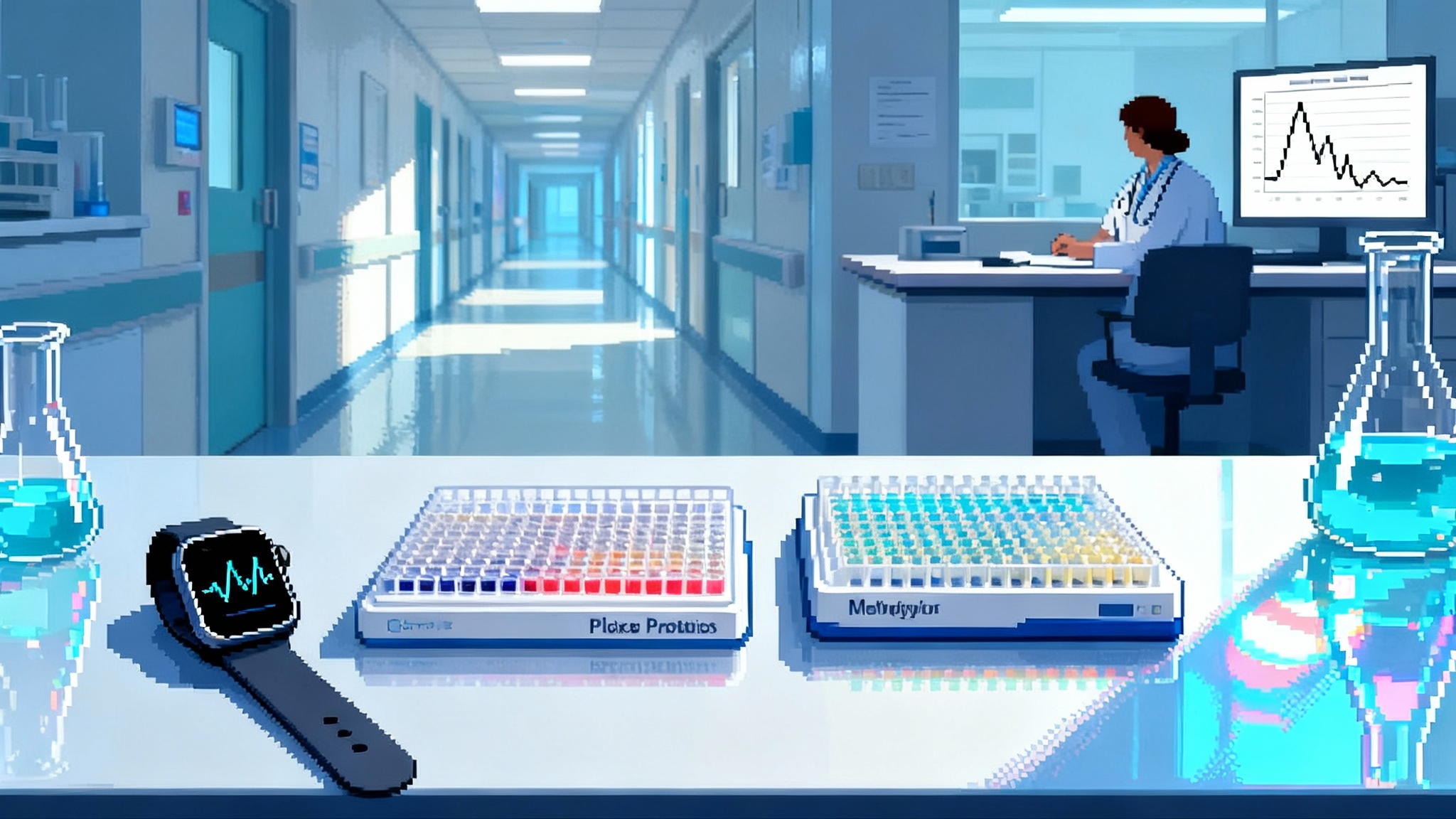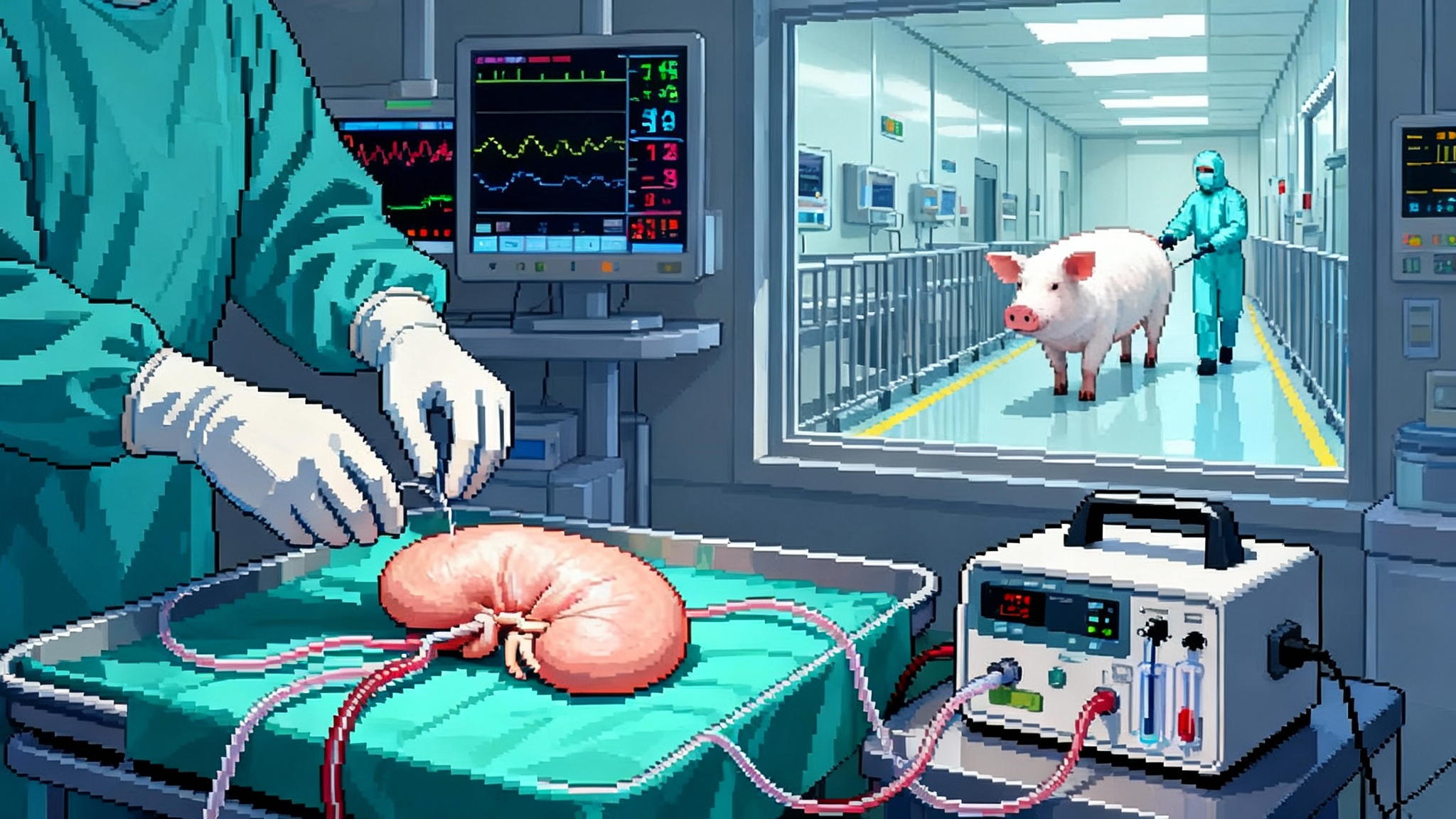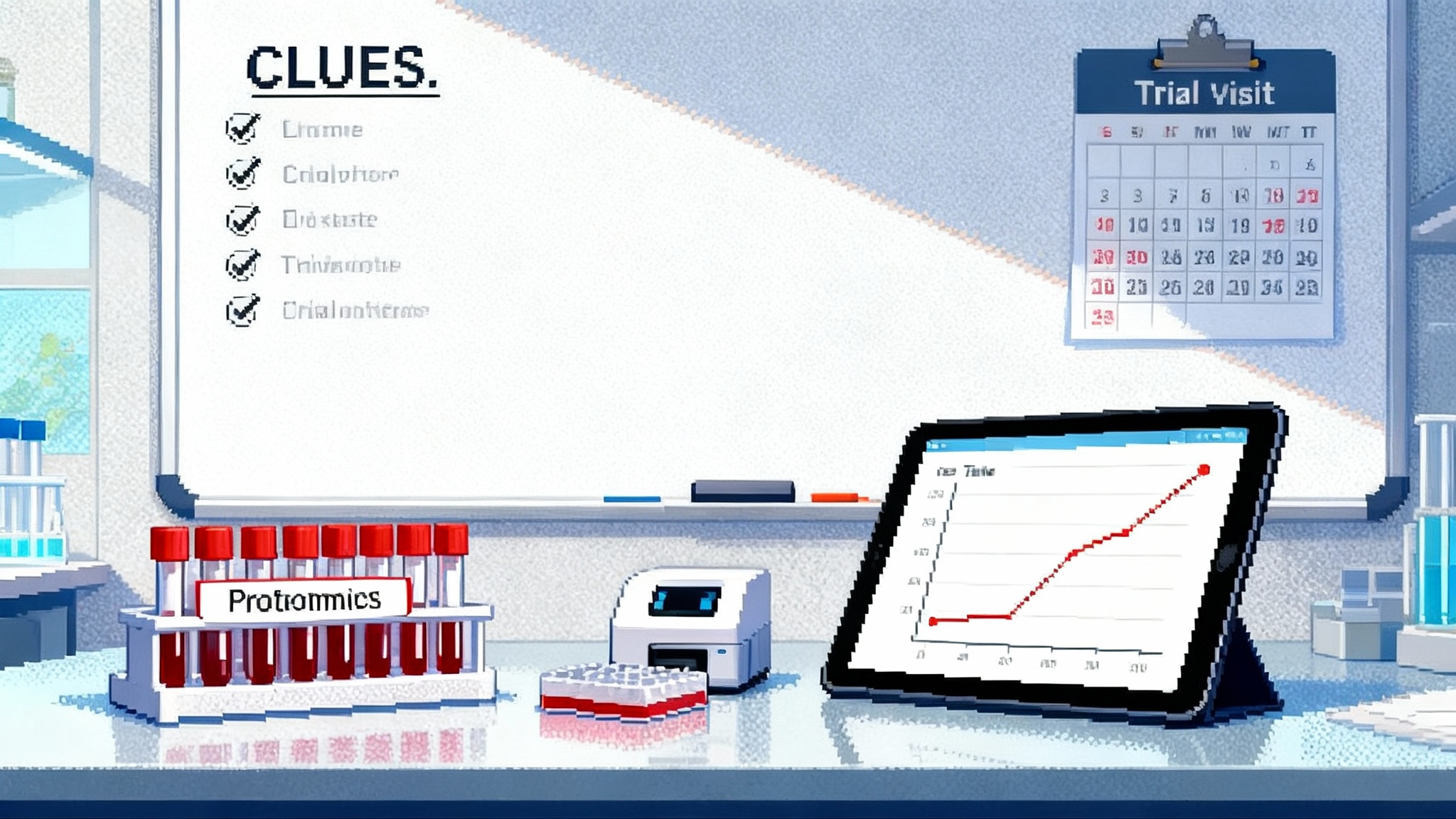ESC 2025 makes CHIP clinical: slowing aging blood clones
Fresh ESC 2025 data suggest that daily low-dose colchicine slows the growth of TET2-driven clonal hematopoiesis, an age-linked blood clone tied to cardiovascular and cancer risk. Here is a practical case for midlife CHIP screening and a near-term path to clone-targeted therapies.
The moment CHIP crossed from risk marker to target
At the European Society of Cardiology Congress 2025, a substudy of the LoDoCo2 trial reported something many cardiovascular and aging researchers have hoped to see for years. Among people with chronic coronary disease, daily low-dose colchicine was associated with a slower rate of growth in TET2-driven clonal hematopoiesis, the age-associated expansion of mutated blood stem cell clones that has been tied to higher risks of heart disease and cancer. The effect on overall clonal growth trended downward, and the signal was clearest in TET2 carriers, where the annual growth of clone size was meaningfully blunted compared with placebo. The findings were presented in parallel with a peer-reviewed analysis in JACC. For readers who want the technical details, see the JACC LoDoCo2 CHIP substudy.
If you have not followed this field, clonal hematopoiesis of indeterminate potential is a quiet passenger in the blood that becomes more common with age. In many people it remains harmless. In others, especially when certain genes dominate and clone size grows, the passenger starts grabbing the wheel. Mutations in TET2, DNMT3A, ASXL1 and a handful of others push macrophages toward a pro-inflammatory state. The result is a background flame that accelerates atherosclerosis, stresses the heart and, rarely but importantly, can be a step toward blood cancer. A 2024 mechanistic study in mice and human datasets presaged this moment: colchicine dampened interleukin-1 beta overproduction and prevented accelerated atherosclerosis in the setting of TET2 loss of function. For the preclinical-to-human bridge that explains why the ESC signal is plausible, read the European Heart Journal preclinical study.
Why this is more than another anti-inflammatory story
Cardiovascular prevention has been shifting slowly from cholesterol-only to inflammation-plus. Canakinumab, an antibody against interleukin-1 beta, proved that lowering inflammation can reduce major adverse cardiovascular events in high-risk patients. Post hoc genomic work suggested that people carrying TET2 mutations may have derived outsized benefit. Interleukin-6 blockade is being tested at scale in outcomes trials. This mirrors broader moves toward mechanism-based prevention, from one-time LDL editing goes mainstream to inflammation control. Until now, clinicians lacked direct evidence that a therapy could slow the underlying clonal force that makes some aging blood more dangerous.
Think of CHIP like weeds in a garden. Statins and blood pressure control are like better soil and careful watering. Anti-inflammatory drugs are like turning down the sun that weeds exploit. What the ESC 2025 signal hints at is different. Colchicine may be slowing how fast the weeds themselves spread. That matters because clone size tracks with risk. A therapy that decelerates clonal growth could stretch the timeline to trouble by years.
The clinical case for routine midlife CHIP screening
Screening is not an abstract bioethics exercise here. It is a practical way to find a common, age-linked risk factor that we can now begin to modify. As clinical labs recalibrate after the LDT reversal reboots the aging biomarker race, CHIP reporting can ride existing infrastructure.
What to screen
- Age 45 to 65 as the core window, with earlier testing for people who have premature coronary disease, heavy smoking history, autoimmune disease treated with cytotoxic agents, prior chemotherapy or radiation, or strong family history of hematologic malignancy or early cardiovascular disease.
- Peripheral blood next-generation sequencing using a myeloid gene panel that includes at least DNMT3A, TET2, ASXL1, JAK2, PPM1D, TP53, SF3B1, SRSF2, U2AF1 and IDH1 or IDH2.
- Variant allele fraction reporting with a minimal threshold of 2 percent, plus explicit reporting of clone size bands: 2 to 5 percent, 5 to 10 percent, and greater than 10 percent.
How often
- If negative at midlife, repeat once at age 60. If still negative and risk factors are controlled, repeat only if clinical context changes.
- If positive, repeat annually to measure clone dynamics and confirm persistence.
How to act on results
- Everyone with CHIP gets intensive standard prevention: high-intensity statin where indicated, blood pressure to target, smoking cessation, diabetes control, exercise and sleep plans. This is the backbone.
- Elevated inflammatory tone features in many CHIP carriers. Add high-sensitivity C-reactive protein, lipoprotein(a) and interleukin-6 where available. If high-sensitivity C-reactive protein is 2 mg per liter or higher after lifestyle and statins, an anti-inflammatory strategy becomes reasonable.
- If TET2-driven CHIP with growing clone size is present, colchicine 0.5 mg daily emerges as the first pragmatic option based on totality of evidence and the ESC 2025 substudy signal. Discuss gastrointestinal side effects and drug interactions. Avoid in advanced kidney disease without specialty input.
- For JAK2 or TP53 carriers, the cardiovascular and hematologic risk profiles differ. These cases merit hematology co-management and may not follow the same playbook.
Where screening lives in the system
- Primary care and cardiology clinics can order CHIP sequencing through existing reference labs that already run myeloid panels. The operational lift is modest. The report reads like any other targeted next-generation sequencing test, but with simple interpretive guidance.
- Hematology partners should be looped in for high-risk gene patterns, large clones or cytopenias. The goal is a shared protocol, not a referral cliff.
Building an accelerated pipeline for clone-targeted interventions
Colchicine is the opening move, not the endgame. The therapeutic map is getting clearer. As seen in Klotho goes clinical, aging biology is moving from models into human trials with pragmatic designs.
Near-term agents
- Interleukin-1 pathway blockers. Canakinumab already reduced cardiovascular events and hinted at outsized benefit in TET2 carriers. Rilonacept and anakinra exist for other indications. The question is not pharmacology. It is patient selection, dose, duration and cost in prevention.
- Interleukin-6 pathway blockers. Ziltivekimab targets interleukin-6 ligand and in Phase 2 cut high-sensitivity C-reactive protein by roughly 90 percent in chronic kidney disease. The outcomes program is underway in atherosclerotic disease with chronic kidney disease, a population where colchicine is often avoided. If results are positive, interleukin-6 blockade offers a second, gene-agnostic route to turn down CHIP-fueled inflammation.
- NLRP3 inflammasome inhibitors. Small molecules that blunt the inflammasome sit just upstream of interleukin-1 beta release. They are moving through cardiovascular and metabolic indications and should be tested prospectively in CHIP carriers.
Next-wave approaches
- Clone-guided anti-inflammatory combinations. In TET2 carriers with rising variant allele fraction and residual inflammation, combine colchicine with interleukin-1 or interleukin-6 blockade and compare against monotherapy in event-driven designs. The goal is to link a reduction in clonal growth plus biomarker control to fewer heart attacks and strokes.
- Epigenetic modulation. TET2 and DNMT3A encode enzymes that manage DNA methylation. Several companies are exploring small molecules that restore or rebalance methylation programs without the bone marrow toxicity of older hypomethylating agents. The bar here is high. Any epigenetic strategy must show clone-specific impact at doses that spare normal hematopoiesis.
- Selective depletion of mutated clones. Precision cell-surface or metabolic vulnerabilities may allow antibody drug conjugates or small molecules to chip away at mutant myeloid progenitors. Even partial shifts in clone composition could lower risk over time.
Who is working on it
- Large biopharma already has interleukin-1 and interleukin-6 assets. Cardiometabolic pipelines can add CHIP-enriched cohorts quickly.
- New companies focused on somatic mosaicism are building diagnostics and discovery engines to link specific clones to druggable targets. Expect partnerships that marry cheap screening with targeted development across cardiology and oncology.
The biomarker to hard-endpoint roadmap for this decade
If we want CHIP control to become a mainstream longevity therapy by 2030, we need a disciplined path from sequencing report to fewer deaths and hospitalizations. Here is a concrete version that health systems, regulators and payers can align on.
Stage 1. Analytical validity and classification
- Standardize reporting for CHIP across labs. Use the 2 percent variant allele fraction floor for detection and report size bands. Include gene-specific risk commentary that reflects current evidence rather than generic language.
- Validate longitudinal measurement. Confirm that annual changes in variant allele fraction are reproducible across platforms. This ensures that growth rates can serve as a decision variable.
Stage 2. Clinical validity and risk staging
- Build simple risk tiers that combine gene, clone size and inflammation. For example, Tier A is DNMT3A with low variant allele fraction and normal high-sensitivity C-reactive protein. Tier B is TET2 with 2 to 10 percent variant allele fraction and high-sensitivity C-reactive protein at or above 2 mg per liter. Tier C is any clone above 10 percent or high-risk genes such as JAK2, TP53 or multiple mutations.
- Link tiers to action. Tier A gets aggressive lifestyle and standard prevention. Tier B adds colchicine if coronary disease is present or risk is high. Tier C triggers specialty co-management and consideration of investigational therapy.
Stage 3. Surrogate endpoint trials
- Design 12 to 24 month studies that enroll midlife adults with TET2 or ASXL1 CHIP and elevated high-sensitivity C-reactive protein. Randomize to colchicine, an interleukin-1 blocker, an interleukin-6 blocker or combinations.
- Co-primary surrogates: change in clone growth rate measured by variant allele fraction slope, and change in inflammatory biomarkers. Secondary endpoints include endothelial function, plaque inflammation on positron emission tomography and microvascular measures.
- Success criteria: a significant slowing of clone growth plus sustained biomarker improvement, with acceptable safety and adherence.
Stage 4. Hard endpoint trials
- Event-driven outcomes trials in enriched CHIP populations are feasible. Enroll adults with established atherosclerotic disease plus TET2 or ASXL1 CHIP and high-sensitivity C-reactive protein at or above 2 mg per liter. Randomize to active therapy versus placebo on top of standard prevention.
- Primary outcomes: cardiovascular death, myocardial infarction or stroke. Secondary outcomes: hospitalization for heart failure, all-cause mortality and incident hematologic malignancy. Exploratory outcomes: incident solid tumors and clonal evolution patterns.
- Timelines: two to three years for surrogate work and platform validation, four to five years for first outcomes readouts, with interim analyses for safety and futility.
Stage 5. Coverage and clinical adoption
- If a therapy lowers events in CHIP carriers, incorporate CHIP status into labels and payers’ prior authorization rules. Health systems can combine screening with statin programs, coronary calcium scoring and lifestyle clinics.
- Create registries that track real-world clone dynamics, medication adherence, events and cancer outcomes. Use these data to refine who benefits most and when to escalate therapy.
The policy argument in plain terms
- The burden is large enough. By midlife, several percent of adults carry a detectable clone. By age 70, it is closer to one in five. Concentrating screening between 45 and 65 captures the window when clone growth can be slowed before the steepest risk slope.
- The test is already in the building. Most reference labs run myeloid sequencing panels daily. Adding a CHIP order pathway is a light lift.
- The first therapy does not break the budget. Colchicine is inexpensive. It will not be right for everyone, but it is good enough to begin risk-directed treatment in the subset who stand to gain.
- The upside spans cardiology and oncology. Slowing clone growth could mean fewer heart attacks, fewer hospitalizations for heart failure and potentially fewer cancers over long follow-up. Even modest gains compound in population health.
Responsible enthusiasm: what to avoid
- Do not extrapolate colchicine to all clones. The ESC signal is strongest for TET2. Other genes may behave differently.
- Do not use hypomethylating agents outside trials for CHIP. The toxicity is not justified in people without marrow failure or leukemia.
- Do not abandon standard prevention. Clonal biology adds a powerful layer, but cholesterol, blood pressure, glucose and tobacco remain the four horsemen you can tame today.
What to do Monday morning
For clinicians
- Add a CHIP panel to preventive care for adults 45 to 65 who are already in your lipid and blood pressure workflows.
- Agree on a simple protocol with hematology for escalating cases.
- Discuss colchicine with appropriate TET2 carriers, particularly those with coronary disease and persistent inflammation, after reviewing kidney function and drug interactions.
For health systems
- Stand up a CHIP clinic integrated with cardiovascular prevention and cardio-oncology. Use nurse navigators, templated reports and shared decision tools.
- Launch a registry now. Capture variant allele fraction at baseline and yearly, plus medication use and events. This will accelerate learning health system loops.
For industry and funders
- Fund clone-enriched trials that test anti-interleukin strategies alone and in combination, with variant allele fraction slope as a primary surrogate. Require robust pharmacovigilance and quality of life measures.
- Prioritize next-generation epigenetic modulators that show clone selectivity at low dose. Require pre-specified stopping rules tied to cytopenias.
The bottom line
ESC 2025 did not deliver a miracle pill. It delivered something more useful. It showed that a familiar, inexpensive drug may slow the growth of one of the most important aging-linked blood clones that drives cardiovascular risk. That is the difference between treating smoke and turning down the fire at its source. With routine midlife CHIP screening and a focused pipeline of clone-targeted interventions, we can convert a silent risk carried by millions into a tractable, measurable, preventable problem. The path is practical. The tools exist. The time to build is now.
